Find Help
More Items From Ergsy search
-

Pelvic Floor Exercises - Using Your Pelvic Floor to Calm Down Your Bladder
Relevance: 100%
-

Pelvic Floor Exercises - Using Your Pelvic Floor to Calm Down Your Bladder
Relevance: 97%
-

How to do pelvic floor exercises | NHS
Relevance: 72%
-

The Pelvic Floor Muscles - Developing an Exercise Programme
Relevance: 72%
-

Pelvic health: Urge Incontinence
Relevance: 48%
-

Pelvic health: prolapse
Relevance: 46%
-

Pelvic health: prolapse
Relevance: 45%
-

Pelvic health: stress urinary incontinence
Relevance: 44%
-

Your pelvic health matters: insights from NHS clinicians
Relevance: 43%
-

Incontinence and Prolapse - Physiotherapy Advice
Relevance: 40%
-
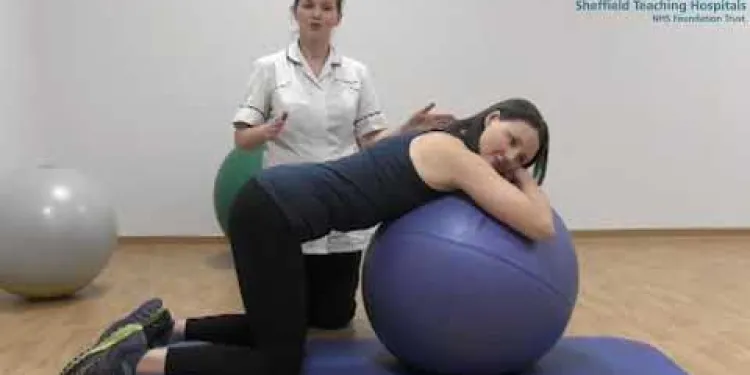
Mat and gym ball exercises with pregnancy related Pelvic Girdle Pain
Relevance: 37%
-

Prolapse Types and Tips
Relevance: 33%
-

Physiotherapy Assessment of Urinary Incontinence
Relevance: 33%
-

Can exercises help with labor preparation?
Relevance: 33%
-

Incontinence | NHS
Relevance: 33%
-

Incontinence and Prolapse - Physiotherapy Advice
Relevance: 31%
-

Prolapse Management
Relevance: 28%
-

Newcastle Specialist Continence Service's Light Urinary Incontinence Project
Relevance: 28%
-

Pelvic Girdle Pain Advice Class
Relevance: 26%
-
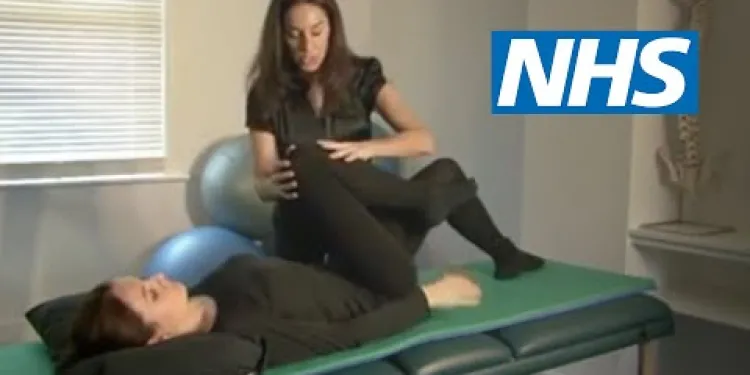
Exercises for sciatica: spinal stenosis | NHS
Relevance: 24%
-

What exercises can I do during pregnancy?
Relevance: 24%
-
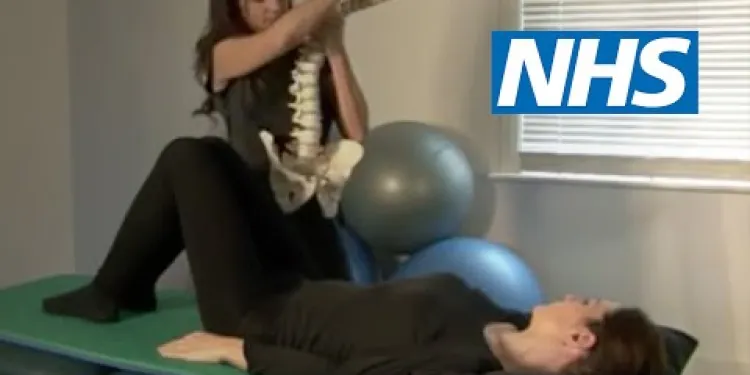
Exercises for sciatica: herniated or slipped disc | NHS
Relevance: 24%
-
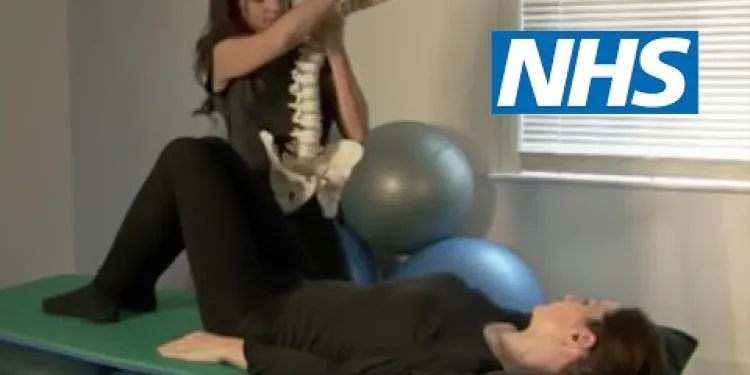
Exercises for sciatica: herniated or slipped disc | NHS
Relevance: 22%
-

BSL Pelvic inflammatory disease (PID)
Relevance: 22%
-

Can I do abdominal exercises during pregnancy?
Relevance: 21%
-

Can I do high-impact exercises while pregnant?
Relevance: 21%
-

Can I take exercise classes during pregnancy?
Relevance: 20%
-

Understanding Your Sexual Health - Pelvic Inflammatory Disease
Relevance: 20%
-
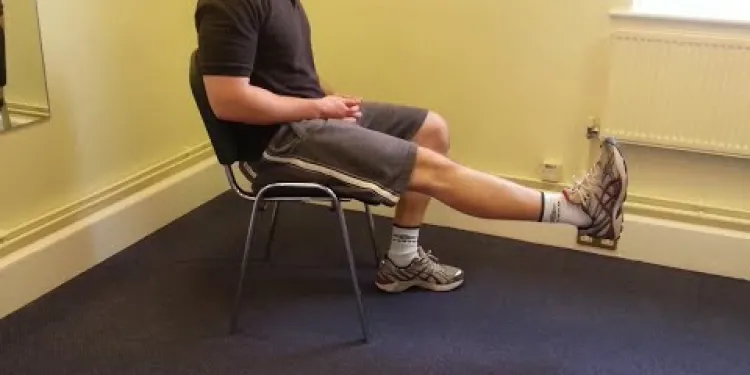
Knee Care Exercises
Relevance: 19%
-

Exercises for sciatica: degenerative disc disease | NHS
Relevance: 19%
-

ACL pre-operation exercises
Relevance: 19%
-

Joint School - Hip Exercises
Relevance: 19%
-

Neck Exercises
Relevance: 17%
-

Neck Exercises
Relevance: 17%
-

Shoulder Exercises 1
Relevance: 17%
-

Exercises for sciatica: piriformis syndrome | NHS
Relevance: 17%
-
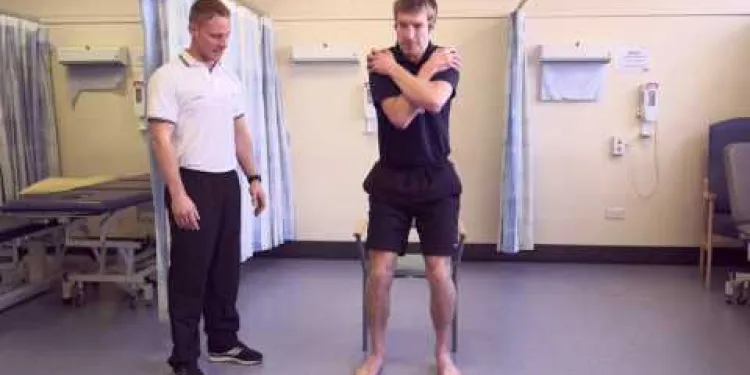
Exercises to help your lateral hip pain
Relevance: 17%
-

Plantar Fascia Loading Exercise (High Load Exercise)
Relevance: 17%
-

Facial exercise programme
Relevance: 16%
-

Exercise in patients with a neuropathy
Relevance: 16%
About Pelvic Floor Exercises
Pelvic floor exercises, also known as Kegel exercises, are a series of exercises designed to strengthen the pelvic floor muscles. These muscles support the bladder, uterus, and bowel, and play a crucial role in controlling urination, bowel movements, and sexual function. Pelvic floor exercises can benefit both men and women, particularly those who experience urinary or fecal incontinence, pelvic organ prolapse, or sexual dysfunction.
Here's how to do pelvic floor exercises:
1. **Identify the muscles**: The first step is to identify your pelvic floor muscles. One way to do this is to stop urination midstream. The muscles you engage to do this are your pelvic floor muscles.
2. **Find a comfortable position**: You can perform pelvic floor exercises lying down, sitting, or standing.
3. **Contract the muscles**: Once you've identified the pelvic floor muscles, contract them by squeezing and lifting them upward. Imagine pulling them away from the chair or squeezing them as if you're holding in urine or gas. Make sure you're not tensing your abdomen, buttocks, or thighs.
4. **Hold the contraction**: Hold the squeeze for 3 to 5 seconds initially, gradually increasing up to 10 seconds as you get stronger.
5. **Relax the muscles**: After holding the contraction, slowly release and relax the muscles for the same amount of time you held the squeeze.
6. **Repeat**: Aim to do 10 repetitions of pelvic floor contractions, 3 times a day.
7. **Breathe**: Remember to breathe normally throughout the exercise. Avoid holding your breath.
8. **Consistency is key**: Like any exercise routine, consistency is important for seeing results. Try to incorporate pelvic floor exercises into your daily routine.
It's essential to perform pelvic floor exercises correctly to avoid overworking or straining the muscles. If you're unsure whether you're doing the exercises correctly or if you're experiencing pelvic pain or other symptoms, consult a healthcare provider or a pelvic floor physical therapist for guidance. They can provide personalized advice and recommendations tailored to your specific needs.
Pelvic Floor Exercises - Using Your Pelvic Floor to Calm Down Your Bladder
Introduction to Pelvic Floor Exercises
Pelvic floor exercises, also known as Kegel exercises, are essential for maintaining bladder control and overall pelvic health. These exercises target the muscles that support your bladder, bowel, and uterus (in women). Strengthening these muscles can have a significant impact on reducing urinary incontinence and improving your quality of life. This is particularly relevant for residents of the United Kingdom, where bladder issues affect millions.Benefits of Pelvic Floor Exercises
These exercises provide numerous benefits, such as:- Improving bladder control and reducing episodes of urinary incontinence.
- Enhancing sexual health and sensation.
- Supporting recovery post-childbirth.
- Preventing pelvic organ prolapse.
How to Perform Pelvic Floor Exercises
Performing pelvic floor exercises correctly is crucial for their effectiveness.- Sit or lie down in a comfortable position.
- Imagine you are trying to stop the flow of urine mid-stream. The muscles you engage are your pelvic floor muscles.
- Contract these muscles for about 5 seconds, then relax for 5 seconds. Ensure you are not contracting your abdomen, thighs, or buttocks.
- Repeat this process 10-15 times, ensuring you breathe normally.
When to Seek Professional Help
If you are unsure whether you are doing the exercises correctly or if you do not notice improvement after several months, it may be beneficial to consult a healthcare professional. In the UK, you can seek advice from your GP or a specialized physiotherapist who can provide personalized guidance and additional treatments if necessary.Integrating Exercises into Your Daily Routine
Consistency is key for effectiveness. Try to incorporate pelvic floor exercises into your daily schedule. For example, practice while brushing your teeth, during breaks at work, or while watching TV. Adding these exercises to your routine will help make them a habit and contribute to a healthier, more controlled bladder function. Pelvic floor exercises can significantly impact your bladder control and overall pelvic health. By understanding and practicing these exercises regularly, you can achieve better bladder control and enhance your quality of life.About Pelvic Floor Exercises
Pelvic floor exercises, also called Kegel exercises, help make your pelvic muscles stronger. These muscles are important because they hold up your bladder, uterus, and bowel. They also help you control when you go to the bathroom and are important for sexual function. Both men and women can do these exercises, especially if they have trouble controlling their bladder or bowel, have pelvic organ prolapse, or have sexual problems.
Here's how to do pelvic floor exercises:
1. Find the right muscles: First, you need to know which muscles to use. You can find these muscles by trying to stop peeing in the middle of going. The muscles you use to do that are your pelvic floor muscles.
2. Get comfortable: You can do these exercises while lying down, sitting, or standing.
3. Tighten the muscles: Once you know the right muscles, tighten them by squeezing and lifting upwards. Imagine you are stopping yourself from peeing or holding in gas. Make sure not to tighten your tummy, bottom, or legs.
4. Hold it: Keep the squeeze for 3 to 5 seconds at first, and try to increase to 10 seconds as you get better.
5. Relax the muscles: After you hold the squeeze, slowly relax the muscles for the same amount of time.
6. Do it again: Try to do this squeeze 10 times. Do the exercise 3 times every day.
7. Remember to breathe: It is important to keep breathing normally during the exercise. Don't hold your breath.
8. Keep practicing: Doing these exercises regularly is important to get stronger. Try to make them a part of your daily routine.
It is very important to do these exercises correctly. This will help avoid hurting your muscles. If you are not sure if you are doing them right or if you feel pain, talk to a doctor or a physiotherapist who knows about pelvic floor exercises. They can give you personal help and advice.
Pelvic Floor Exercises - Calming Your Bladder with Easy Movements
What Are Pelvic Floor Exercises?
Pelvic floor exercises, or Kegel exercises, help keep your bladder healthy. They make the muscles around your bladder stronger. This can help stop leaks when you do not want them. It is important, especially in the UK, because many people have bladder problems.Why Do Pelvic Floor Exercises?
These exercises have lots of good effects, like:- Helping you control your bladder better and stop leaks.
- Making you feel good during sex.
- Helping women heal after having a baby.
- Stopping organs from dropping down.
Steps to Do Pelvic Floor Exercises
To do these exercises right, follow these easy steps:- Find a comfy spot to sit or lie down.
- Think about stopping your pee mid-stream. These are your pelvic floor muscles.
- Squeeze these muscles for 5 seconds, then relax for 5 seconds. Do not squeeze your tummy, legs, or bottom.
- Do this 10-15 times and breathe like normal.
Getting Help from Professionals
If you find the exercises hard or if they are not helping after months, it is okay to ask for help. In the UK, you can talk to your doctor or a special therapist who knows a lot about these exercises.Making Exercises Part of Your Day
To see results, do your exercises every day. You can try them while brushing your teeth, during work breaks, or while watching TV. When you do them often, they become a habit and help keep your bladder healthy. Pelvic floor exercises can help you control your bladder and make you feel better. By practicing them often, you can have a healthier life with less worry about bladder leaks.Frequently Asked Questions
What are pelvic floor exercises?
Pelvic floor exercises, also known as Kegel exercises, involve contracting and relaxing the pelvic floor muscles to strengthen them. These muscles support the bladder, bowel, and uterus in women.
How do pelvic floor exercises help with bladder control?
Strengthening the pelvic floor muscles can help improve bladder control by providing better support and stability to the bladder and urethra, reducing incidents of urinary incontinence.
Who can benefit from pelvic floor exercises?
Both men and women of any age can benefit from pelvic floor exercises, especially those who experience urinary incontinence, post-pregnancy pelvic issues, or weakened pelvic muscles due to aging.
How often should I do pelvic floor exercises?
It is generally recommended to do pelvic floor exercises daily. Aim for three sets of 8-12 repetitions each day to see improvement over time.
How do I locate my pelvic floor muscles?
You can identify your pelvic floor muscles by trying to stop urinating mid-stream. The muscles you use to do this are your pelvic floor muscles. However, do not perform exercises while urinating regularly as this can weaken the muscles.
What is the correct technique for doing pelvic floor exercises?
To do pelvic floor exercises, tighten your pelvic muscles as if you are trying to stop a bowel movement or urine flow. Hold the contraction for about 5 seconds, then relax for 5 seconds. Repeat 8-12 times.
Can pelvic floor exercises be done during pregnancy?
Yes, pelvic floor exercises are safe and beneficial during pregnancy. They can help prepare your muscles for childbirth and reduce the risk of postpartum incontinence.
How long does it take to see results from pelvic floor exercises?
Improvement in bladder control can typically be seen within a few weeks to a few months of consistent pelvic floor exercises.
Are there any risks associated with pelvic floor exercises?
Generally, pelvic floor exercises are safe for most individuals. However, overdoing the exercises or performing them incorrectly can lead to muscle strain. Always follow proper techniques and consult a healthcare professional if unsure.
Can pelvic floor exercises help men?
Yes, men can also benefit from pelvic floor exercises, especially those who experience urinary incontinence or erectile dysfunction.
Is it necessary to see a specialist to learn how to do pelvic floor exercises?
While it is not necessary, seeing a physiotherapist or a healthcare provider who specialises in pelvic health can ensure that you are doing the exercises correctly and provide a tailored program for your needs.
Can pelvic floor exercises help with overactive bladder?
Yes, pelvic floor exercises can help manage symptoms of overactive bladder by providing better control over the bladder muscles and reducing sudden urges to urinate.
Should I stop pelvic floor exercises once my symptoms improve?
No, it is important to continue doing pelvic floor exercises regularly to maintain the strength and function of the muscles and prevent symptoms from returning.
Can I do pelvic floor exercises while sitting or lying down?
Yes, pelvic floor exercises can be done in various positions, including sitting, lying down, or standing. This flexibility makes it easier to incorporate into your daily routine.
Are there any tools that can help with pelvic floor exercises?
Yes, there are several tools and devices such as pelvic floor trainers, biofeedback devices, and smartphone apps designed to help you perform pelvic floor exercises correctly and track your progress.
What are pelvic floor exercises?
Pelvic floor exercises make the muscles in your pelvis stronger. These muscles help you control when you go to the toilet. The exercises are also called Kegel exercises.
Here is how you can do them:
- Sit or lie down in a comfy spot.
- Tighten the muscles you use to stop wee (urine) from coming out. Do not hold your breath.
- Hold for a few seconds, then relax.
- Repeat this 10 times.
You can do these exercises anywhere. Try to do them every day.
Using a timer or counting can help you remember how long to hold and relax.
Pelvic floor exercises are also called Kegel exercises. They help make the muscles around your bladder, bowel, and uterus (for girls) stronger. You do this by squeezing and then letting go of these muscles.
If you find it hard to understand, you can ask someone to help you. You can also watch videos online that show you how to do these exercises.
How do exercises help you control your bladder?
Exercises can help you hold pee better. This means you don't have to go to the toilet as often.
Try squeezing the muscles you use to stop pee. Do this a few times every day.
Counting to five while squeezing can help. Then, let go and relax.
You can ask a grown-up to help you remember to do this.
Using a phone alarm or a reminder note can be useful.
Making your pelvic floor muscles stronger can help you control your bladder better. These muscles give more support to your bladder, which holds pee, and the urethra, which is the tube pee comes out of. This can help stop leaks.
Who can get help from pelvic floor exercises?
These exercises can help many people. They are good for:
- Women who have had a baby.
- Men and women who have trouble holding pee or poop.
- People who want stronger muscles in their tummy area.
If you need help doing these exercises, you can:
- Ask a doctor or nurse.
- Use a video guide to show you how.
Anyone, no matter if you're a man or a woman, can do exercises to make their pelvic muscles strong. This is really good for people who have problems when they pee, like leaking a little bit.
These exercises also help women who have had a baby and people whose muscles are not as strong because they are getting older.
You can try using apps or videos to help you remember to do your exercises. Also, setting a reminder on your phone can help.
How often should I do pelvic floor exercises?
You can do pelvic floor exercises every day.
Try to do them at the same time each day. Maybe in the morning or before bed.
You can also do them while sitting, standing, or lying down.
Use a timer to remind you to practice.
Ask someone you trust to help you remember.
It is good to do pelvic floor exercises every day. Try to do three sets of 8 to 12 exercises each day to get better bit by bit.
How can I find my pelvic floor muscles?
You can find your pelvic floor muscles by trying to stop peeing when you are in the middle of doing it. The muscles you use to stop peeing are your pelvic floor muscles. But don't do this exercise every time you pee, because it can make the muscles weak.
If you find it hard to understand, you can ask someone you trust to help explain it. Watching a video or using a picture guide might make it easier too.
How do you do pelvic floor exercises the right way?
To do pelvic exercises, squeeze the muscles you use to stop peeing or pooping. Hold them tight for 5 seconds, then let go for 5 seconds. Do this 8 to 12 times.
Can you do pelvic floor exercises when you are pregnant?
Yes, you can do pelvic floor exercises when you are having a baby.
These exercises are good for your body. They can help your muscles stay strong.
If you do not know how to do these exercises, you can ask a doctor or a nurse.
You can also find videos and apps that can help you learn.
Yes, doing exercises for your pelvic floor is safe and good when you are having a baby. These exercises make your muscles ready for when the baby is born. They also help stop problems like leaking pee after the baby comes.
When will I see changes from pelvic floor exercises?
It can take a little time to see changes from doing pelvic floor exercises. For some people, it can take a few weeks, and for others, it might take a few months. Keep doing the exercises regularly to get the best results.
You can use reminders or set a schedule to help you remember to do your exercises. Talk to a doctor or physiotherapist for more help and tips.
You can make your bladder stronger by doing exercises. You might see your bladder getting better in a few weeks. Sometimes, it takes a couple of months.
Are there any risks with pelvic floor exercises?
Pelvic floor exercises are good for many people. But, like with any exercise, there can be some risks. Always talk to a doctor or someone who knows a lot about these exercises before starting.
Here are some tips:
- Start slowly and do not overdo it.
- If you feel pain, stop and rest.
- Ask for help if you are unsure how to do the exercises.
You can use pictures or videos to help you understand the exercises better.
Pelvic floor exercises are usually safe for most people. But if you do too many or do them the wrong way, you can hurt your muscles. Always do the exercises the right way. If you are not sure how, talk to a doctor or nurse.
Can exercises help men's pelvic floor?
Yes, exercises can help men. These exercises are called pelvic floor exercises. They make the muscles in the bottom of your tummy (stomach) strong.
Here are some tips to practice these exercises:
- Find a quiet place to sit or lie down.
- Tighten the muscles you use to stop wee (urine).
- Hold tight for a few seconds, then relax.
- Repeat this 10 times.
- Try to do this exercise 3 times a day.
Ask a doctor or nurse to show you how if you need help.
Yes, men can do exercises to help their pelvic floor muscles. This can be good for men who have trouble holding pee or getting erections.
Do I need to see a doctor to learn pelvic floor exercises?
No, you do not have to see a doctor to learn these exercises. There are online videos and apps that can help you. If you are unsure, you can ask a nurse or a physiotherapist for help.
You don't have to, but visiting a physiotherapist or a healthcare expert who knows about pelvic health can help you. They can make sure you are doing the exercises the right way and create a special plan just for you.
Can exercises help with bladder problems?
Do exercises for the muscles down there help if you need to pee a lot?
You can try squeezing the muscles you use to stop peeing. This might help.
Ask a doctor or a nurse to show you how to do it right.
There are videos and apps online to help you practice.
Yes, doing exercises for your pelvic floor can help with an overactive bladder. These exercises make your bladder muscles stronger, so you can control your bladder better and not feel like you need to run to the bathroom all the time.
Try counting to 5 as you squeeze your pelvic floor muscles. Then, relax! You can use a timer to help keep track. Practice makes perfect!
When my pelvic floor feels better, should I stop doing the exercises?
When your pelvic floor muscles feel better, you might think about stopping the exercises. But it is good to keep doing them. Pelvic floor exercises help you stay strong and healthy. They keep your muscles strong. This can stop problems from coming back. Here are some tips to help you remember to do your pelvic floor exercises: - Set a time each day to do them. - Use a reminder on your phone or computer. - Do them with a friend or family member. If you are not sure, you can talk to your doctor or a nurse. They can give you more advice.No, it is important to keep doing pelvic floor exercises. This helps the muscles stay strong and work well. It also stops problems from coming back.
Can I do pelvic floor exercises when sitting or lying down?
Yes, you can do pelvic floor exercises while you are sitting or lying down.
Here are some tips to help you:
- Find a quiet place where you can be comfortable.
- Sit in a chair or lie down on a bed.
- Relax your body and breathe slowly.
- Try to tighten the muscles you use when you stop peeing.
- Hold the muscles tight for a few seconds, then relax.
- Do this exercise a few times each day.
Tools that might help you:
- Use an app to remind you to do the exercises.
- Ask a friend to help you practice.
- Watch a video for more guidance.
You can do exercises for your pelvic floor in different ways. You can sit, lie down, or stand. This makes it easy to do these exercises every day.
What can help me do pelvic floor exercises?
Pelvic floor exercises help keep muscles strong. Here are some things that can help you:
- Apps: These are like games on a phone or tablet. They can remind you to do your exercises.
- Exercise Videos: You can watch and follow along. They show you how to do exercises.
- Pillows or Cushions: These help make you comfortable while you exercise.
- Timers: A timer helps you know how long to do an exercise. Use a phone timer or a small kitchen timer.
- Yoga Mats: Use a soft mat to lie on. It’s more comfortable than the floor.
- Illustrated Guides: Look at pictures that show you each step.
These tools can help make exercises easier and more fun!
Yes, there are tools to help you do pelvic floor exercises. Some tools are called pelvic floor trainers. There are also biofeedback devices and apps on your phone. These tools help you do the exercises right and see how you are getting better.
Useful Links
- Ergsy carfully checks the information in the videos we provide here.
- Videos shown by Youtube after a video has completed, have NOT been reviewed by ERGSY.
- To view, click the arrow in centre of video.
- Most of the videos you find here will have subtitles and/or closed captions available.
- You may need to turn these on, and choose your preferred language.
- Go to the video you'd like to watch.
- If closed captions (CC) are available, settings will be visible on the bottom right of the video player.
- To turn on Captions, click settings .
- To turn off Captions, click settings again.
More Items From Ergsy search
-

Pelvic Floor Exercises - Using Your Pelvic Floor to Calm Down Your Bladder
Relevance: 100%
-

Pelvic Floor Exercises - Using Your Pelvic Floor to Calm Down Your Bladder
Relevance: 97%
-

How to do pelvic floor exercises | NHS
Relevance: 72%
-

The Pelvic Floor Muscles - Developing an Exercise Programme
Relevance: 72%
-

Pelvic health: Urge Incontinence
Relevance: 48%
-

Pelvic health: prolapse
Relevance: 46%
-

Pelvic health: prolapse
Relevance: 45%
-

Pelvic health: stress urinary incontinence
Relevance: 44%
-

Your pelvic health matters: insights from NHS clinicians
Relevance: 43%
-

Incontinence and Prolapse - Physiotherapy Advice
Relevance: 40%
-

Mat and gym ball exercises with pregnancy related Pelvic Girdle Pain
Relevance: 37%
-

Prolapse Types and Tips
Relevance: 33%
-

Physiotherapy Assessment of Urinary Incontinence
Relevance: 33%
-

Can exercises help with labor preparation?
Relevance: 33%
-

Incontinence | NHS
Relevance: 33%
-

Incontinence and Prolapse - Physiotherapy Advice
Relevance: 31%
-

Prolapse Management
Relevance: 28%
-

Newcastle Specialist Continence Service's Light Urinary Incontinence Project
Relevance: 28%
-

Pelvic Girdle Pain Advice Class
Relevance: 26%
-

Exercises for sciatica: spinal stenosis | NHS
Relevance: 24%
-

What exercises can I do during pregnancy?
Relevance: 24%
-

Exercises for sciatica: herniated or slipped disc | NHS
Relevance: 24%
-

Exercises for sciatica: herniated or slipped disc | NHS
Relevance: 22%
-

BSL Pelvic inflammatory disease (PID)
Relevance: 22%
-

Can I do abdominal exercises during pregnancy?
Relevance: 21%
-

Can I do high-impact exercises while pregnant?
Relevance: 21%
-

Can I take exercise classes during pregnancy?
Relevance: 20%
-

Understanding Your Sexual Health - Pelvic Inflammatory Disease
Relevance: 20%
-

Knee Care Exercises
Relevance: 19%
-

Exercises for sciatica: degenerative disc disease | NHS
Relevance: 19%
-

ACL pre-operation exercises
Relevance: 19%
-

Joint School - Hip Exercises
Relevance: 19%
-

Neck Exercises
Relevance: 17%
-

Neck Exercises
Relevance: 17%
-

Shoulder Exercises 1
Relevance: 17%
-

Exercises for sciatica: piriformis syndrome | NHS
Relevance: 17%
-

Exercises to help your lateral hip pain
Relevance: 17%
-

Plantar Fascia Loading Exercise (High Load Exercise)
Relevance: 17%
-

Facial exercise programme
Relevance: 16%
-

Exercise in patients with a neuropathy
Relevance: 16%


